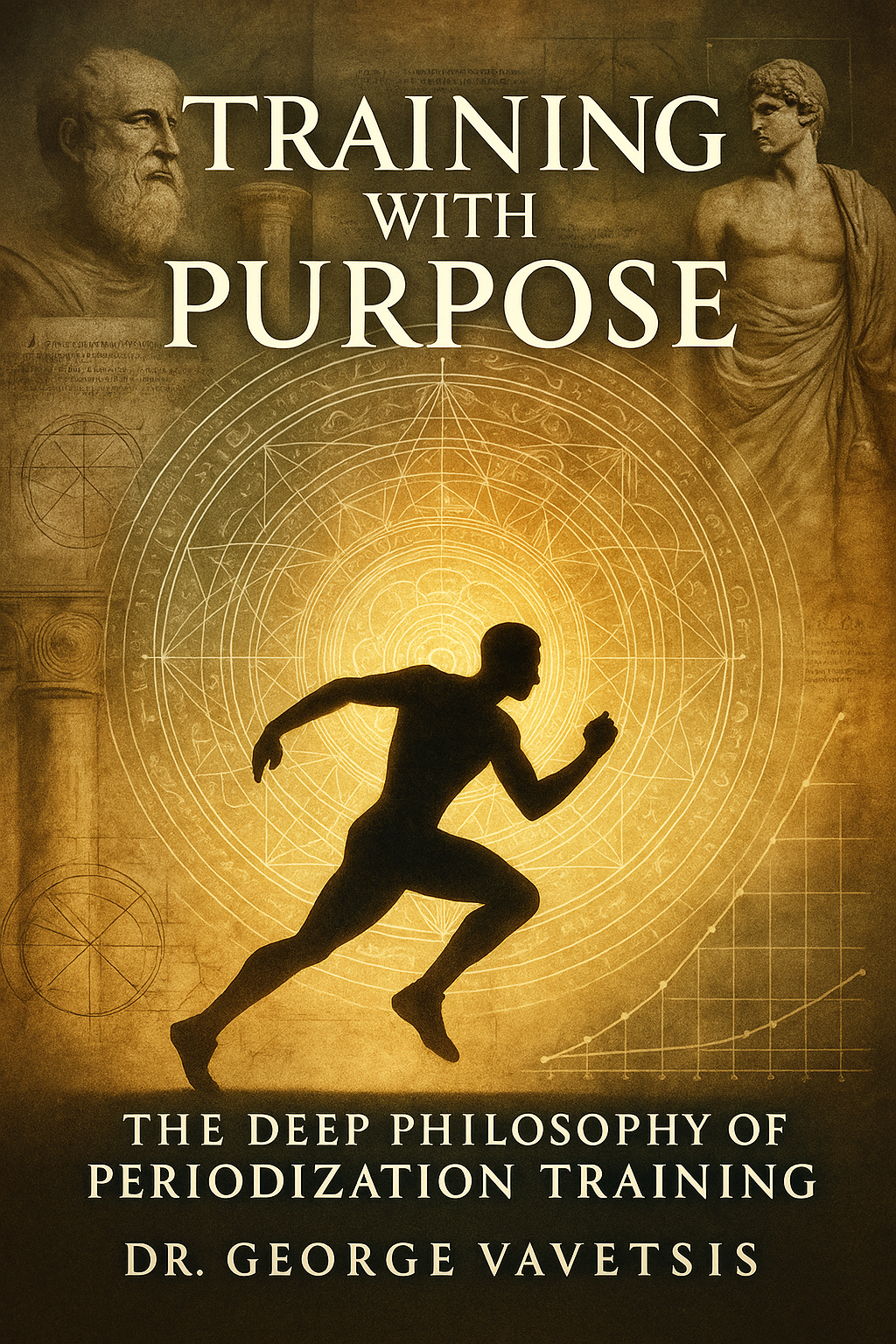
Training with Purpose-The Deep Philosophy of Periodization Training
Pages: 2268
The book Training with Purpose delves into the philosophy and science of periodization training, emphasizing its evolution, principles, and application in modern athletic performance. The text integrates insights from sports science, psychology, and biomechanics to construct a framework that guides structured training for optimizing physiological adaptation and peak performance.
Periodization training is based on the fundamental premise that the human body adapts to training stimuli over time, requiring a systematic manipulation of training variables to ensure continuous improvement. The work explores the historical development of periodization, tracing its roots from ancient Greece to the Soviet Union’s structured training paradigms, which laid the foundation for contemporary periodized programming. The classical model divides training into general, preparatory, and competition phases, each serving a unique physiological and psychological purpose. Over time, refinements have led to the adoption of nonlinear, block, and hybrid periodization models, tailored to different athletic and tactical needs.
One of the core principles addressed in the book is the relationship between stress, adaptation, and performance. The application of progressive overload, variation, and specificity is necessary to drive long-term improvements while preventing accommodation and stagnation. Training adaptation follows Selye’s General Adaptation Syndrome, where athletes cycle through alarm, resistance, and exhaustion phases. Failure to manage these phases effectively can lead to overtraining and diminishing returns. Therefore, periodization models incorporate planned recovery and tapering to maximize supercompensation and performance gains.
A key concept in modern periodization theory is the balance between structure and chaos. Training is often viewed as a dualism between order (structured programming) and disorder (the natural variability of biological adaptation). Chaos theory has been increasingly integrated into training methodologies, recognizing that biological systems thrive under a degree of unpredictability, which fosters resilience and robustness. By adjusting training loads dynamically in response to physiological feedback, coaches can optimize the balance between consistency and novelty.
The text explores neuroplasticity and motor learning in periodized training, demonstrating how structured progression enhances neuromuscular coordination and movement efficiency. The brain's ability to rewire itself in response to repetitive stimuli plays a crucial role in skill acquisition and long-term athletic development. Cognitive fatigue and decision-making under stress are also examined, emphasizing the need for mental toughness and strategic rest periods within training cycles.
The influence of circadian rhythms on training efficiency is another consideration in the text. The timing of training sessions in relation to an athlete’s biological clock can impact strength, endurance, and recovery. Chronobiology suggests that aligning training loads with natural energy fluctuations can enhance performance outcomes. Additionally, the text discusses the impact of hormonal regulation on training adaptation, noting the roles of cortisol, testosterone, and growth hormone in recovery and muscle synthesis.
Hybrid periodization models are extensively analyzed, particularly in their application to tactical and military athletes. Unlike traditional sports, where peak performance is targeted for specific events, military and tactical athletes must sustain high levels of physical readiness at all times. Hybrid models integrate elements of endurance, strength, and power training within the same mesocycles, allowing for simultaneous adaptation across multiple physiological domains. This model also employs auto-regulatory mechanisms, where training intensity and volume are adjusted in real-time based on biomarker feedback, heart rate variability, and subjective readiness scores.
The book also emphasizes the role of strength-endurance hybrid training, which challenges the conventional dichotomy between strength and endurance. This training method optimizes sustainable power output by enhancing fast-twitch muscle fiber recruitment while improving metabolic efficiency. It highlights the importance of targeted training loads that maximize neuromuscular activation without inducing excessive fatigue.
The psychological aspects of periodization are deeply integrated into the discussion, particularly in relation to motivation, burnout prevention, and mental resilience. The text underscores the importance of deliberate practice, where athletes engage in structured, purposeful training sessions with clear objectives. It explores the interplay between intrinsic and extrinsic motivation, noting how long-term periodization strategies must be designed to sustain engagement and drive mastery. Stoic philosophy is referenced in relation to athletic development, advocating for disciplined training, adaptability to adversity, and a long-term perspective on success.
Another significant discussion in the text is the concept of variability in training load and its impact on adaptation. Traditional linear models assume a steady progression of load increments; however, research supports the efficacy of fluctuating intensities, which induce greater adaptive responses through stochastic resonance. This method of training manipulates the nervous system to enhance proprioception, reaction time, and resilience against performance plateaus.
Technological advancements in periodization training are also explored, including AI-based coaching and biomechanical feedback systems. These tools allow for real-time adjustments to training programs, ensuring athletes receive the optimal stimulus based on their physiological state. Wearable technology, force plates, and velocity-based training devices provide objective data that enhance precision in load management.
Virtual reality (VR) and cognitive load periodization are emerging fields discussed in the book, particularly in relation to esports and tactical training. VR simulations offer a controlled environment for skill acquisition under varied stress conditions, mimicking real-world scenarios with enhanced specificity. This application aligns with the broader concept of ecological dynamics, where training environments must reflect the competitive or operational demands of the athlete.
The text concludes with an examination of the future of periodization, proposing a shift towards fluid periodization models that integrate real-time physiological monitoring, adaptive training algorithms, and multimodal training strategies. The ongoing evolution of training science suggests that rigid, pre-planned structures may become obsolete in favor of dynamic, responsive models that cater to the unique and fluctuating needs of each athlete.
Training with Purpose provides an in-depth analysis of periodization as both a science and an art, combining historical foundations with modern innovations to create a comprehensive training philosophy. It emphasizes the importance of strategic planning, adaptive load management, and the integration of psychological and physiological principles in optimizing athletic performance. The work serves as a valuable resource for coaches, athletes, and researchers seeking to refine their understanding of periodized training and its application in high-performance sports and tactical conditioning.
